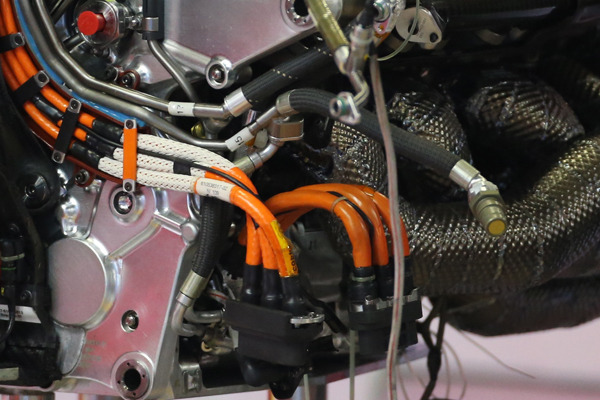While 2017’s Formula 1 rules shake-up primarily aims at overhauling aerodynamics and tyres, power unit efficiency and energy management will remain key performance factors, as our F1 technical expert Nicolas Carpentiers explains.

The Mercedes power unit and Patrick Head | © F1i & WRi2
MERCEDES STILL THE ODDS-ON FAVOURITE?
One side effect of 2017’s F1 aero overhaul is that more power will be needed to propel cars that will be 26kg heavier, produce around 20 percent more downforce, and generate extra drag due to Pirelli’s 25 percent wider tyres.
It would not be surprising therefore to see Mercedes’ edge in the current 1.6-litre V6 turbocharged era actually increase, as implied by Williams co-founder and former engineering director Patrick Head.
“There is no doubt about it that the drag levels of the car will be higher,” he told The Guardian. “But what makes the engine fractionally more important is that with more downforce, which they will undoubtedly have, your percentage at full throttle – the percentage of the lap at which you are power limited rather than grip limited – will be higher, so if you have that bit more power it will give a slight advantage.”

 '
'



